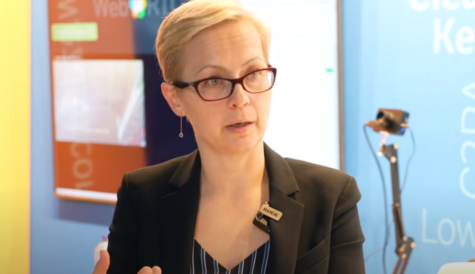
After more than 40 years of operation, DTVE is closing its doors and our website will no longer be updated daily. Thank you for all of your support.
5G heralds ‘next layer’ of digital disruption for media
The advent of 5G mobile technology will herald the biggest phase of disruption for established media businesses since the advent of digital distribution, according to a panel of experts assembled to discuss the topic at MIPCOM.
 5G is the next coming layer on top of the digital disruption of the media distribution chain, according to Mary Kay Evans, chief marketing officer, Verizon Media It will provide new distribution opportunities and new ways of making media more immersive while presenting challenges related to security, she said.
5G is the next coming layer on top of the digital disruption of the media distribution chain, according to Mary Kay Evans, chief marketing officer, Verizon Media It will provide new distribution opportunities and new ways of making media more immersive while presenting challenges related to security, she said.
Evans said that advertising around content based on location and hyper targeting, as well as more immersive advertising, would have a major impact on the way content is monetised.
Evans said that the shift to 5G represents “a quantum leap” with significantly higher speed and throughput from 4G, even if no-one yet knows “what the killer apps will be”.
Experimentation is underway. Verizon had opened a 5G lab to enable startups to experiment with “things we are not even thinking about”, said Evans.
She said that the most immediate impact in relation to the media industry would be on OTT TV players, with live sports streaming a standout example. Being able to deliver live events with minimum latency with immersive experiences layered on top would stimulate innovation, and this would spill over from OTT into broadcast, she said.
Also speaking on the panel, Thierry Fautier, VP video strategy, Harmonic, said that one of the main shifts driven by 5G would relate to the ability of service providers to enable zero rating of streaming services as part of their mobile plans. He said that the ability of 5G to deliver Gigabit broadband to the user means that the way that content is consumed will be “completely different to 4G”, driven by transformational changes in speed and latency.
Fautier said that 5G could become “a competitor to fibre”, but pointed to the ability of the technology to deliver immersive experiences inside packed sports stadiums as a key early-adopter application. He said that in-stadium catch-up of what’s happening in a match on spectators’ mobile phones is one example of how 5G can be used.
Fautier said that 5G could also unleash the possibility of more widesperead use of VR. “The more quality you get the more expensive it is but in less than five years people will be immersed in gaming and in 8K capture,” he said. “What you do in production today, the spectator will be able to, at scale, with an exceptional experience.”.
In terms of the type of media distribution players that stand to benefit, Fautier said OTT TV players will ride on any network. Regarding broadcasters, he pointed to the EBU’s 5G Media Action Group’s (5G MAG) call for free-to-air content to be made available across 5G without being charged against 5G plans, adding that multicast technology would be essential to enable this vision.


